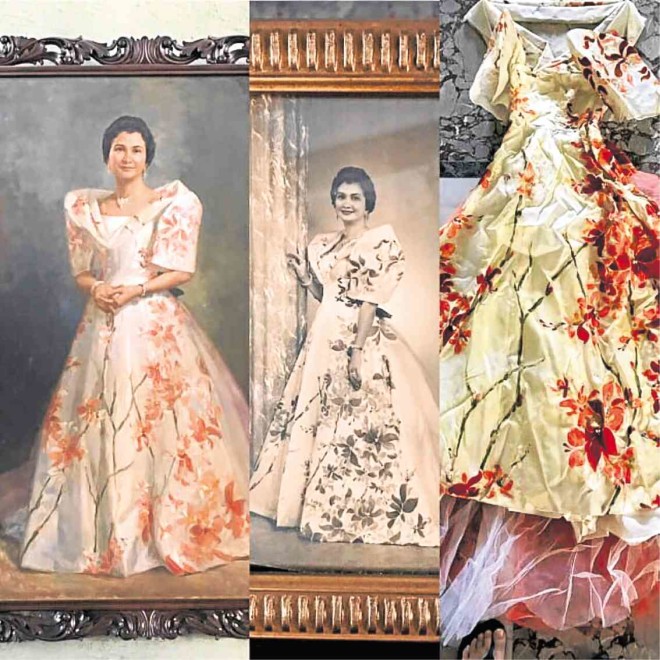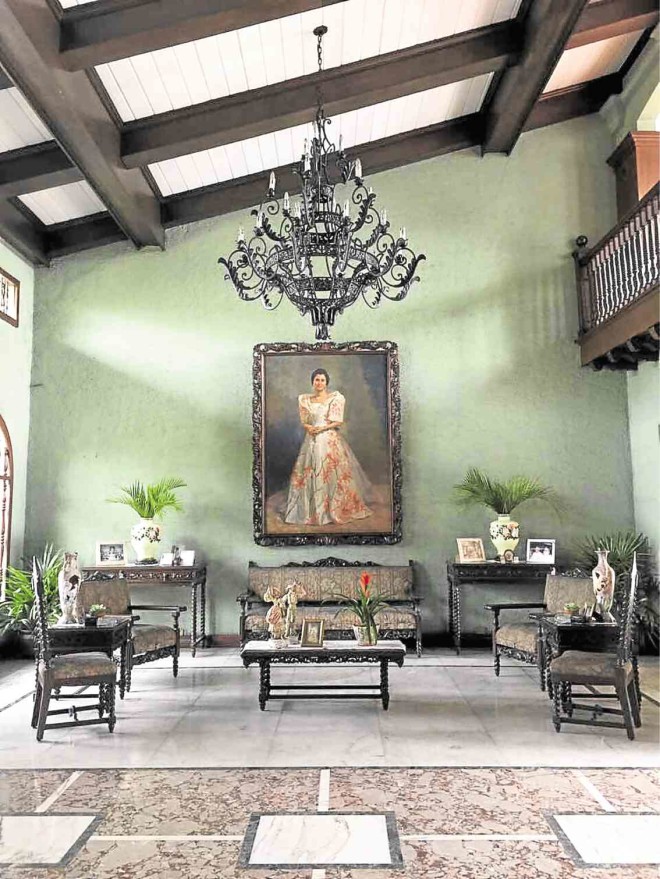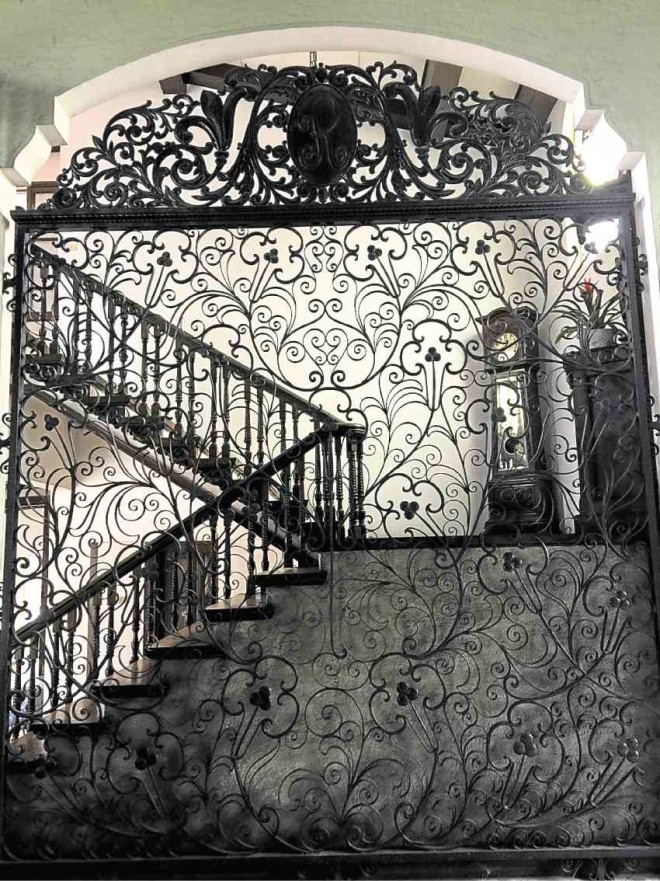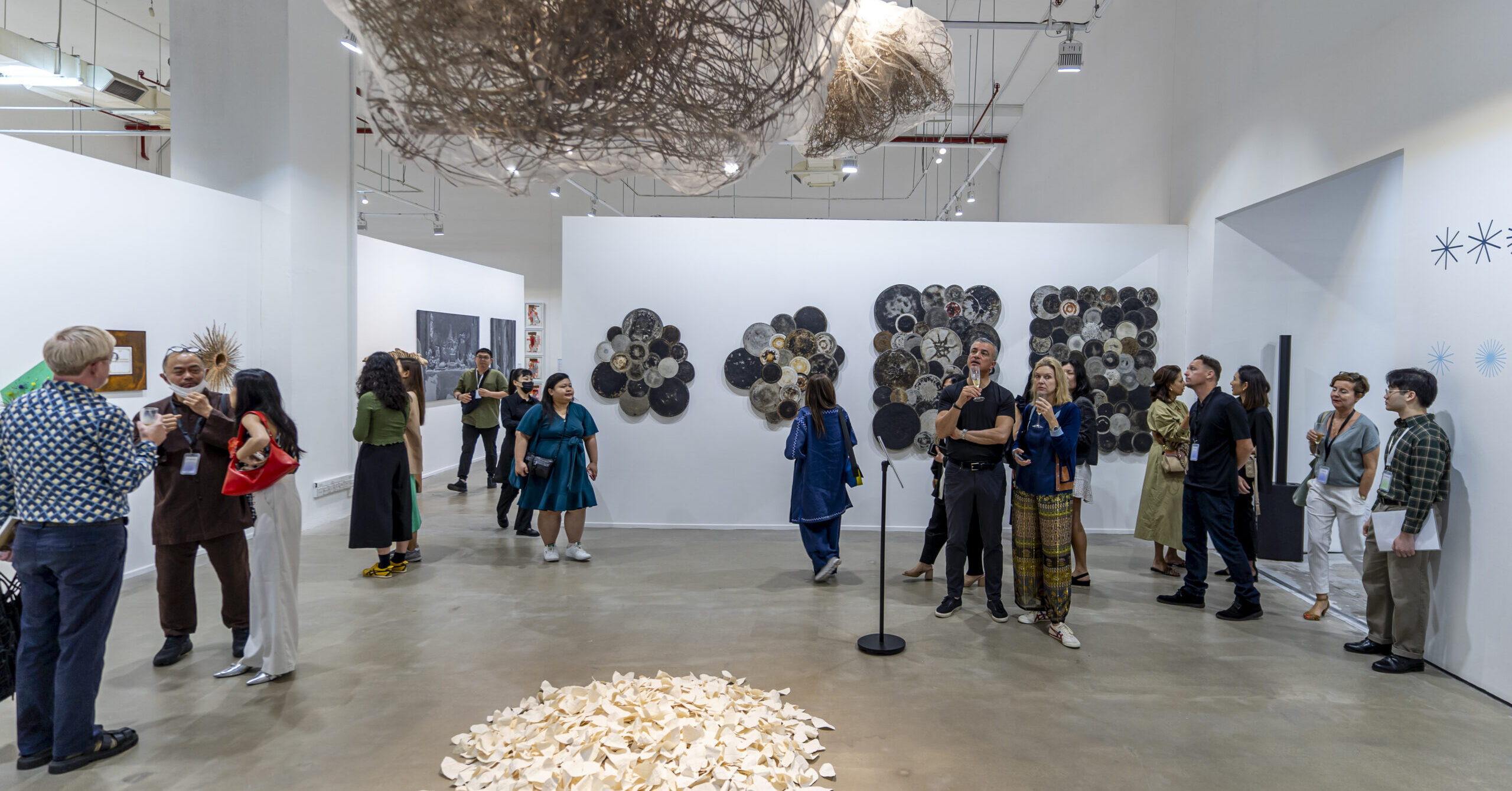
Note: For 16 years, I went to school in the Marikina-Loyola Heights area. On my way to school each day, I would see a beautiful house perched on a hill overlooking the Marikina valley and the Ateneo. I was always fascinated by this beautiful home and would stare at it each day on my way to or from school.
Later, I found out that some of the girls I went to school with lived in that beautiful house on the hill. I never did get to see it until many decades later, when I became friends with one of the grandchildren.
A few months ago, I came across that friend’s post as he waxed nostalgic about the pending loss of this beautiful home and all the memories that came with it. I was surprised to learn that the entire property had just been sold. Among the photos he posted was a huge portrait of a beautiful woman.
The woman in the painting was my friend’s grandmother. I asked him about the house and he and his wife graciously invited me to take one last look before it became completely empty.
Stepping into the Vista Valley Court was like traveling back in time. Huge trees stood around the enormous property and several houses lined the long, expansive driveway. At the center of it stood the elegant and majestic home that Emerito Ramos Sr. built for his wife, Susana, a little over 60 years ago.
Here, in the words of their grandson Butch, is the story of the house and the beautiful Amorsolo portrait of “the light of our home.” – Cathy S. Babao
The negotiations for the sale of the ancestral house and the rest of the property had long been completed, but it was only on March 29, 2017 that we marked the end
of an era.
On a day filled with so much emotion, my grandmother’s portrait was taken down from the wall where it had been hanging for more than 50 years. National Museum director Jeremy Barnes made his way from Batanes to our ancestral home, with several members of the museum staff, to transport this great work of art, with the actual dress my grandmother wore when her likeness was captured.

The receipt signed by the artist himself, Fernando C. Amorsolo, was also included in the collection.
My cousins and I gathered in the sala to say goodbye as they took her portrait down. We watched them carefully load it onto the truck and waited until they drove away, and we could see her no more.
It was a meticulous process: the men put on their gloves and carried the grand painting down the same hall where one of my first memories took place. I remember hearing a car pulling up in the driveway while my cousins and I were playing around the house, and seeing my lolo alight onto the stairway, I rushed into his arms to embrace him.
This excitement and joy was similar to what I felt knowing that my grandmother’s portrait would be given the honor of a spot in the National Museum; but I felt a deep and immense sadness, too. I comforted my aunt—my grandparents’ oldest living child—as we watched the heart of our home go through the main doorway. It was painful to witness, but we knew we made the right decision.
A few years ago, I heard from some family members that they had seen a letter written by my grandfather, Emerito M. Ramos Sr., to my grandmother, Susana Bernardo Ramos, describing a place where they would be building their home. A couple of weeks ago, I saw and read the actual letter which was dated October 18, 1954.
“This is to remember the 18th—for the 24th time—that (“contract of option”) acquired on this very day, is a token of remembrance of our wedding anniversary… Your plans for a house—where you can build a home, cultivate a garden, dig a swimming hole, put a playground and have lots of fresh air—can be realized in this spot. This would be quite a place to see our children grow up [in]—a clean and healthy atmosphere. I can imagine the kids rambling around—Baby and Boy dashing about like terrier[s] or Susie flitting around like [a] butterfly. Perhaps, you’d want some of our friends to be with us, too, on weekends to share a bit of mountain life with us. For you and me, this place would give us a new and needed vitality for the years ahead. After your trip, I know you will be anxious to return to a home such as this and, from now on, I’d like you to think of ‘home’ in this fashion.”
And soon, this dream became a reality.

Sweet, cool air
Our house sat on a land overlooking the Marikina Valley, on the peak looking directly at Antipolo. The only road leading to Marikina was then just a single lane, and noise and smog were almost nonexistent. This made the air sweet and cool. It allowed me and my cousins to play around the house and the surrounding compound for hours.
Although I lived away for a number of years, I found myself coming back to the home I have always known and loved to accompany my mother, Menie, who was growing old and ill. She welcomed us back lovingly.
I have practically lived in this place all 53 years of my life, and in all those years, I have collected countless memories.
It was a large, six-bedroom house built in Spanish-Mediterranean style by architect Rafael M. Larracas, with a swimming pool, a sprawling garden and terraces built by people from the Mountain Province. At the entrance was a grand arch, and its hallways opened up to the courtyard.
There was a remarkable sala with beautiful furniture designed and built by Gonzalo Puyat and Sons; grillwork and chandeliers by El Arte Español; an office for my grandfather; and a grand dining hall. Outside, there was a basketball court and a pelota court, and there were trees everywhere.
Other houses sprang up around it eventually as my mother and her siblings started families of their own, but the center of the compound was still The Big House, as we fondly call it.
Magical aura
Some of us believed it to be like Camelot, with a life of its own. There was an almost magical aura about the compound; it was vast, and there were so many rooms and spaces to explore. I remember hopping about the terraces, like the terrier my lolo had imagined. I remember hiking around the property with my cousins, pretending we were soldiers eating military rations. I recall riding my bike down the paved roads as my yaya spent so much time looking for me to get me to drink my milk.
There were so many people who passed through the halls of The Big House. My grandfather was an esteemed businessman and lawyer who entertained friends, colleagues, partners, politicians and many Jesuit priests from the Ateneo. There were so many memorable parties.
My uncles, Tito Tony and Tito Baby, would put on a dazzling display of fireworks, a tradition I took over after years of watching them in awe. I remember each room, every detail of the house’s personality, which was of course shaped by those who lived in it. The house owed its aura to lolo and lola.
My grandfather was charismatic and intelligent, and he held an unwavering belief in divine providence. He came from humble beginnings and built himself up through sheer will and determination. He had a chapel built on the second floor of the house; and it was adorned with intricate woodcarvings by Napoleon Abueva whose connection to our family was forged by Tita Chinkie, the wife of Tito Tony, lolo and lola’s second eldest son.

Lolo developed friendships with a good number of priests, whom he treated with utter respect. The chapel was put to good use; many of our gatherings began in prayer, and mass was celebrated there by many priests who had become friends of the family.
The celebrations that took place in the house were grand and festive. There was the dining hall with a long wood table that could seat 12. There was a display of my lola’s collection of china and glassware accumulated from years of travel; a buffet table always lined with food; and a painting by Anastasia Mamuyac that was almost like a mirror of what was going on. It depicted a tavern with men and women dancing, laughing and drinking in celebration of life.
Lolo spent a lot of time in his office, which had a grand desk, a comfortable reclining chair and volumes of leather-bound books. Surrounding him were the diplomas, certificates and other honors he achieved, along with a striking portrait by Serafin Reyes, a classmate of Tito Boy, his youngest son.
He would labor at his desk for hours, smoking cigars, refining his business tactics and making plans for the future. This room embodied his character the most: grand and lavish, yet still hardworking and diligent.
Although my grandfather appeared to be a larger-than-life figure to us for most of our lives—he had a booming voice that echoed through every corner of the house—he was still very human. He cared deeply for our grandmother and continually tried to give her the best that he could.
Sometimes it still felt like he was trying to impress her even after years and years of being married. There were times, though, when he would fail to do so; lola once took their beloved boxer, Delilah, with her on his private helicopter after he upset her. Of course, she returned a little later after clearing her head. Their personalities contrasted, but they had a bond that could not be broken.
Stern but kind
Lola was stern but equally kind and good natured. The security guard’s logbook was brought to the kitchen every morning for her inspection so she knew who left and who entered and what time. She would call our parents afterward, informing them of our whereabouts, and we would get reprimanded by her occasionally for sneaking out or coming home too late.
All this was done out of concern, and we loved and respected her with all our hearts, doing our best to remain obedient and work within the system she developed.
The balcony outside her bedroom was one of the key spots where I remember Lola; from there, she presided over what was going on in her house. She would stand and look out from the balcony every afternoon to admire the garden, and when something seemed to be out of place, she would make her rounds, have a rosebush trimmed properly or have the plants watered.
She also often did the handiwork herself. She always wanted the house to look its best; and someone who helped her achieve this through the years was her eldest daughter, Tita Ping. Tita Ping also had a hand in keeping the house well maintained when my wife and I held our wedding reception there in 1993, where I surprised my wife and all those that attended with fireworks. Several people even told me that it felt like a fairytale.
Lola kept things neat and orderly, quiet and peaceful. Sometimes she would tell my cousins and I to tone down our voices, saying that we could be heard all the way to Ateneo when we swam and played.
When we were feeling a little too hot in the afternoons, we would have to ask permission to have the central air conditioning unit turned on, which entailed a long process: the gigantic compressor, which was connected to a complicated network of pipes and wires that allowed every unit in the house to work, was in the basement, and only accessible to us via intercom.
We would ask one of the maids to tell the person in charge of operating the machine to switch it on, and she would always tell us, “Kailangan muna nating magpaalam kay Mrs. Ramos.” Once permission was granted, the compressor was turned on and we would venture into one of the rooms to lounge about and relax. Everything was in perfect order, just as my grandparents wanted.
There were times the house was buzzing with activity and times when it was silent and meditative. It was sometimes full of guests and it was sometimes empty and relaxing, but it was always filled with the presence of Lola Saning.
Lolo commissioned a stunning portrait of his beloved wife by Amorsolo, who crafted an image of her that we will all remember forever: beautiful, elegant and full of life. We will always consider her the light of our home, and her portrait is a light that will never go out, one that will be remembered for generations.
Saying goodbye
Our home was beautiful, but it could not last forever. Our house has seen its fair share of funerals; we held wakes for my sister Susan and my nephew Ramon when they passed away and the house remained beautiful despite the grief.
Even while mourning our departed, it felt as if the light of their spirits still illuminated every corner of our home. Now we mourn for the house itself. The property was sold recently, and our family is now in the final process of saying goodbye to this place we called, and will continue to, call our home.
We tearfully watched the image of lola’s light being transported from our home to the world outside, but I know that her light will not fade. She is ending up in a place that will give her the honor our family knows she deserves.
Her portrait being taken away from its original place does not symbolize her leaving us. t is a reminder that her light has been transformed into something the rest of the world can see. —CONTRIBUTED














































